Weekend Reads brings you longform features from Honest Cooking’s first iPad Magazine, which you can download for FREE here
By Sasha Gora
When it comes to truffles there is no grey. Truffles are either black or white and opinions regarding them are no different. People truly feel passionate about these subterranean mushrooms. Which is the best, the Italian truffle (Tuber Magnatum Pico) or the French Périgord black truffle (Tuber melanosporum)? Are truffles best served with eggs or pasta? Are they edible gold, or just sad overpriced fungus?
People often assume that someone who really likes food must really like fancy foods and because of their price, there are few foods fancier than truffles. I certainly qualify as someone who really likes food. My kitchen cupboard is always home to three different types of olive oils (an extra virgin for roasting and baking, a finer extra virgin for salads and a virgin for frying). I go out of my way to buy the best Alphonso mangoes when they are in season and I pay for Haas avocadoes in euros and not dollars (and I assure you that in Europe they are almost expensive enough to be considered a delicacy).
I take food very seriously and while there is no grey when it comes to truffles – a grey truffle indicates molding – my opinion on the world’s most expensive food is best described as exactly that. My view about truffles nestles somewhere between sensory intrigue and rational skepticism. I do not think twice about certain indulgences. But I’m not yet convinced that truffles are worth all the fuss and a must-have at any price. Do they actually make everything from butter to oil to pizza to pasta sing?
My geography is usually not truffle friendly. As a Canadian living in Germany, truffles – especially white truffles – are not usually local fare. However, this autumn a job brought me to Northern Italy. The mention of this to anyone infected with a truffle obsession has one meaning: truffle season. White truffle season. As colleagues spent their weekends going on trips to Florence, Verona and Milan, I booked train tickets, rented a car, mapped out Northern Italy’s most prodigious truffle producing regions and headed to small villages to meet face-to-face with Tuber Magnatum Pico – the infamous and supposedly incomparable Italian white truffle.
My first truffle destination was Sant’Agata Feltria. Located in Emilia-Romagna and just a stone’s throw away from Tuscany, it hosts a National Truffle Festival each Sunday in October. This year marked its twenty-eight year. It is a village that most of my Italian coworkers had not heard of and my GPS just barely. I arrived in the evening and after entering the village, I soon exited it again as my car and I searched for street names and inns. I ended up between villages. It was rural enough to see deer, but populous enough to have a restaurant: Ciccioni Gabriella. The restaurant had no menu, but they had a free table to seat my friend and I. We put together all of the bits of Italian we knew to decipher that we would be served and to say no if we did not want something. The server brought out platter after platter from the kitchen: crostini with marinated porcini, parsley and olive oil; crostini with white truffle and fresh cheese; roasted crostini with porcini and cheese; fresh ravioli with ricotta and finely shaved white truffle; fresh tagliatelli with porcini; escalope with truffle sauce; battered and fried porcini; pannacotta; English pudding; creamy lemon granita. To all of which we said yes.
When there is no menu, the dynamics of restaurant eating changes. The power relation between customer and server is up ended. You cannot complain that you did not get what you ordered, or that the dish failed to match its description. There is a strong sense that the restaurant exists to feed people. We left feeling not just full, but cared for. The food was honest. It was local. It might have been a feast of truffles and porcini, but it was humble. The whole meal, including wine, cost less than a single plate of pasta with fresh white truffles would cost in Munich or Toronto, and also less than some of the truffles on sale at the fair.
At the fair the next day, there was a rock concert pizazz. The people vastly outnumbered the truffles. RVs filled several downtown parking lots. Locals with fluorescent vests directed traffic. The market stands sold cheeses and meats, purses and kitschy little gifts, liquors and fresh fruit. Most of the edibles had some relation to truffles: cheese with truffles, salami with truffles, truffle oils, truffle spreads, truffle polenta, and truffle risotto.
I later learned that it has been a poor year for truffles. The summer was too hot and there was not enough rain. There was little sign of this at the truffle fair, at least to novice eyes. Or, more aptly – to novice nose. Stalls were selling truffles – both black and white – from Tuscany, Emilia-Romagna and Marche. They ranged in price from 10 euro for a few small black truffles to hundreds for a generously sized white truffle. I left with a few black truffles and one prized white one. When I got home, I carefully stored them in a jar in the bottom of my refrigerator. I made sure to wrap them in paper towel and to change the towel every 24 hours to decrease moisture and prevent molding. When preparing, I scrubbed the truffles of their dirt and carefully sliced as finely as I could. I did not cook the white ones; the black ones I added only in the last few seconds of cooking. For black truffles, I scrambled eggs and flipped omelettes. With white truffles, I cooked fresh pasta tossed with butter, pecorino romano. But nothing I made at home seemed to capture the magic of that truffle and porcini meal I ate the night before the fair in the countryside of Sant’Agata Feltria.
Fifteen kilometers south of Asti, two brothers – Giorgio and Natale Romagnolo – keep alive the family tradition. They are fifth generation truffle hunters who have run La Casa del Trifulau since 2002. Asti and its neighbour Alba are towns both renowned for their white truffles.
I’m not sure who is older – Giorgio or Natale – but Giorgio was the shy brother and Natale his opposite. Natale welcomed our group of amateur truffle enthusiasts to the family home cum museum to talk about truffles, truffle hunting, stories of the region and his family. He related that there are approximately 4000 trifolau in the region of Piemonte. To officially become a trifolau it is necessary to pass an exam to acquire a license. Truffle hunting is very competitive and the season – generally October and November – is very short. Given the high values at stake, stories of dog kidnappings and murders are not uncommon. In contrast to these unseemly tales, the sun began to brighten the rolling hills surrounding La Casa del Trifulau. The neighbouring vineyards were burnt shades of red and orange and the company and the day warmed for my truffle hunting experience.
Accompanied by two dogs, a mix of pointer and bracco (hound), Giorgio led us into the woods. He wore camouflage pants, a flannel shirt, hunting vest, glasses with red frames, a Tilly hat and one earring. His two dogs Brio, 2 1/2 years old, and his 6 year old mother, Diana bounded ahead. The Romagnolo brothers swear by this mix of breeds for truffle hunting dogs. A very serious looking German shepherd stands guard the gates of the property.
Diana is the master truffle hunter and Brio is still in training. Giorgio explained that training generally starts when a puppy is 4 months old. At one year, dogs can find truffles, but they need three years to become masters. One of the great debates is whether pigs or dogs are better for hunting truffles. Italians prefer dogs; whereas, the French prefer female pigs. Female pigs are naturally attracted to the scent of truffles because the scent resembles the scent of the pheromones of male pigs. Although naturally inclined to sniff out truffles, there is a greater danger that the pig will eat the truffle before the trifolau is able to snatch it out of her mouth. The Italian point of view is that dogs are easier to train and control and are far more elegant. With dogs it is easier to replace the truffle with a little affection and a dog treat or two.
The intimate relationship between a trifolau and his dog is obvious. As Diana and Brio prance and sniff their way through the woods – property owned by the Romagnolos – Giorgio gently whispers words and sounds to keep them concentrated on the task. He immediately responds when the dogs catch the scent and begins to dig and pulls them back to finish digging himself with a small hoe making sure not to damage the precious white gold. He then takes great care to cover the hole up with dirt and leaves to restore the optimal growing conditions for any spores that might still be present and to hide the truffle spots. After about an hour and a half in the woods, we return to the family home with two white and one black truffle.
The white truffles are the real prize. In fact, Giorgio and Natale’s father trained his dogs to find white truffles only as they are much more valuable than black ones. For nearly two centuries farmers and scientists have been cultivating black truffles, but how to cultivate white truffles has yet to be discovered. So, the demand for white truffles simply cannot be met and the outrageous prices reflect this gap between nature’s supply of white truffles and the human appetite for them. The Guardian reports that this autumn the average price for white Italian truffles is €3,500 per kilogram. Fetching prices like this, truffles are certainly worth their weight in gold.
Then came the eating. Giorgio handed Natale the truffles and Natale’s extraverted and charismatic personality once again took over. He shared his favourite ways of eating truffles – with gnocchi or with just barely scrambled eggs – as he carefully weighed and prepared the day’s find. He used a truffle slicer to cut them paper thin as we watched with big eyes and glasses of Barberra d’Asti in hand. On the table were baskets of bread, plates of local salami and olive oil infused with white truffles. As Natale vigorously sliced, he scattered the white truffle over two plates of soft cheese. Like the wine, the salami and the truffle, the cheese came from the region and was half cow’s milk, half sheep’s milk.
When I had cooked with fresh truffles at home, I was not able to recreate the magic of my countryside meal. But here at a large table in the Romagnolo’s Truffle “Museum” that magic returned. As we mopped up the cheese and the oil with slices of bread, Natale spoke of the emotions of truffles. Truffles are something that we eat with our nose. Truffles smell like a mixture of garlic, honey and hay; however, how all those three distinct scents come together in more than the sum of their parts. The smell is what excites. The taste comes second.
While my wallet and I are most likely to stick with good olive oils, mangoes and avocadoes and skip on truffles, my view on the world’s most expensive food is no longer grey. We eat with much more than our mouths. How much we enjoy a meal is influenced by the smell and appearance of the food, where we eat, how we eat and who we eat it with. When you know where your ingredients are from and you partake in bring them to your plate you have heightened sensations and attachment. You forget the high price-tags and social hierarchy of the big cities. From fancy to humble, you come to love truffles.








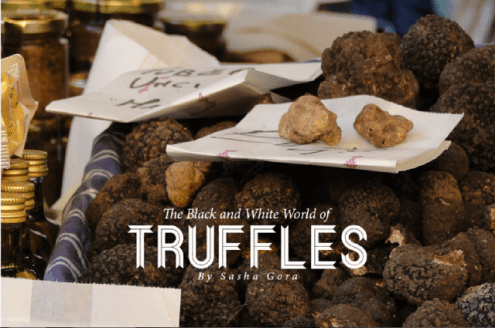
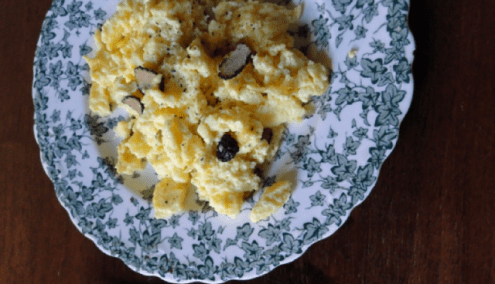
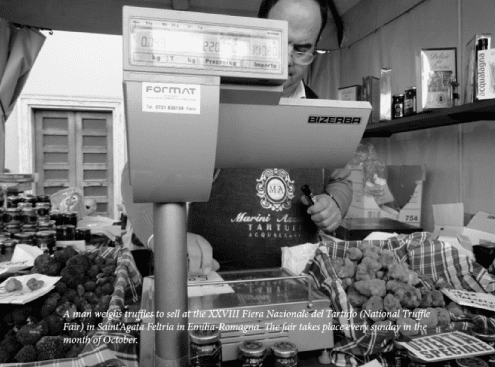
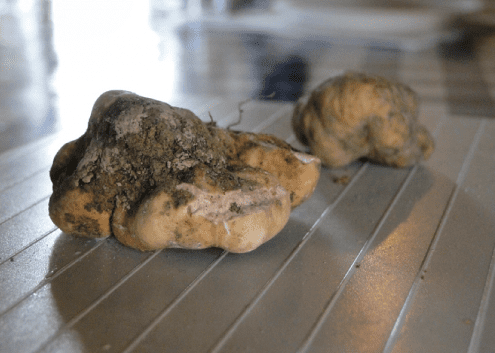








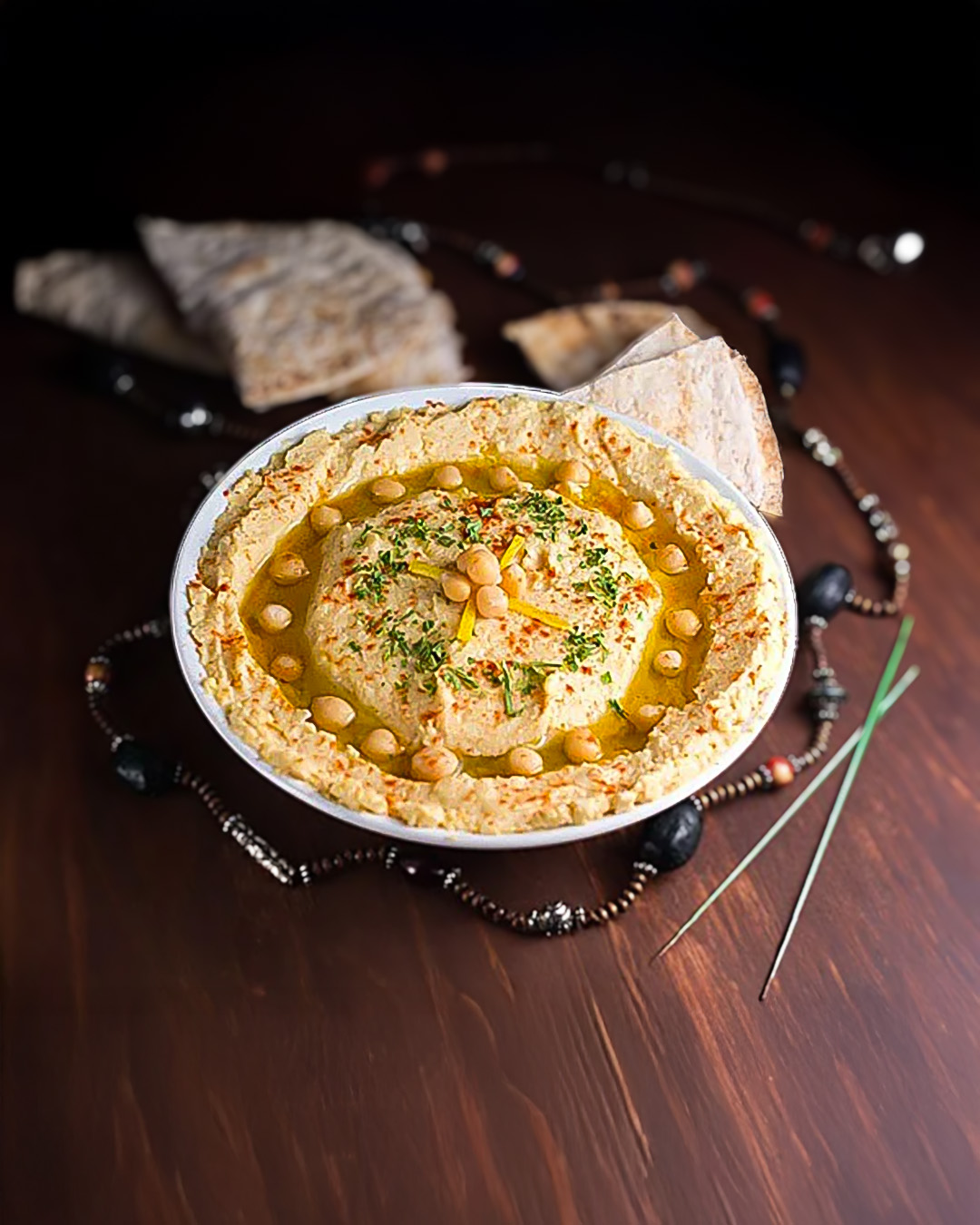
Hi Christine,
My apologies for such a late reply! However, for the next time you have a truffle on hand it is best to eat it as soon as possible. You can store it in the fridge for several days. Wrap the truffle in a piece of paper towel and then put it into a jar with a lid. Change the paper towel every day. This will help the truffle to stay fresh and to not mold.
Regarding recipes, simple yet rich foods taste the best with truffles. Slice the truffle as thinly as possible and add it to scrambled eggs, an omelet, or fresh pasta with lots of butter.
Happy Cooking!
Best,
Sasha
Hi Sasha,
During a recent trip to Croatia, I bought a whole black truffle! Now I am back home and have no idea how to cook it. Can you post up some recipes of ways to cook it and to prepare/store it (it comes in a jar with a little bit of oil in it)? Thanks!
Hi Sasha,
During a recent trip to Croatia, I bought a whole black truffle! Now I am back home and have no idea how to cook it.